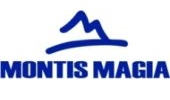
LITHUANIAN KARST PHENOMENA

There are more than 8500 of registered sinkholes in Lithuania that are dotted in a more than 700 km2 area stretching from Nemunėlis Radviliškis near the Latvian border to the town of Vadaktai in the district of Panevėžys. According to the number of sinkholes in one square kilometer the district of Biržai is considered as the most karstified district. There are from 20 to 80 sinkholes counted in one square kilometer in this district. In some places, for example in Karajimiškis near Biržai or in Ripeikiai, there are more than 200 sinkholes in one square kilometer and they occupy more than 30 percent of the land surface. There are less sinkholes in the town of Pasvalys and its surroundings. However areas with 20 to 80 sinkholes in one square kilometer may be found between the southwest edge of Pasvalys and the river Mūša and near the southeast edge of the town. The town of Pasvalys itself is in a little karstified territory with less than 20 sinkholes in one square kilometer.
Photos from the nothern Lithuanian karstic phenomena excursion on February 2009
Map of the Lithuanian geological objects (connect as an unregistered user and click on the map to zoom in until you see the names of geological objects)
The website of the district of Biržai
Largest Lithuanian caves:
- Žalsvasis šaltinis (The Greenish Spring) (depth - 20 m) - the deepest cave in Lithuania
- Karvės ola (The Cow's Cave) (depth - 12,6 m, total length 46 m)
Žalsvasis šaltinis (The Greenish Spring)

The Greenish Spring (Žalsvasis šaltinis) is situated in the town of Pasvalys, on the left bank of the river Lėvuo. The spring appeared in the sinkhole in about 1960. The underground water coming out from the sinkhole formed a channel of several meters. The bottom of the channel is covered by fairly gray, a little greenish sediments that give the water a tint of green. Separate pieces of dolomite and gypsum may be seen in the walls of the sinkhole. The water is clear and cold and has a smell of sulphur hydrogen. The Greenish Spring is the largest spring in the district of Pasvalys and the deepest cave in Lithuania. The spring’s debit is 8-12 l/s. A large part of the river Lėvuo where the spring flows into this river never freezes in winter. Wild ducks like to spend winters here. In 1985 the spring was declared the monument of nature.
The explorations of The Greenish Spring began in the spring of 2006, when during the collaboration of Lithuanian caving club "Aenigma" and Moscow caving club "Sokolniki-RUDN" the experienced cave-diver Aleksey Aksionov came to Lithuania, dived and explored the spring. That time he reached the depth of 16 m and found that the spring branches out into two chambers that he called The Sunny Chamber and The Chamber Of Aenigma. A. Aksionov has dived into The Spring once more in the spring of 2007, but didn't succeed to explore more.
Nevertheless, the divings of A. Aksionov interested the Lithuanian club of technical diving, whose divers began to explore The Greenish Spring in the summer of 2007. They made a series of divings and managed to find a further passage in the end of the Sunny Chamber and reached the depth of 20 m. The cave continues further and possibly during the next divings greater depth will be reached. Also the divers found many places with other passages, and though part of the passages are too narrow to pass for the diver with the equipment, The Greenish Spring hasn’t gave up all of its secrets yet.
The first well of this underwater cave - spring is about 5 m wide and 7 m deep and it ends up with a pile of rocks and stones. Then the cave splits up into to chambers: The Sunny Chamber and The Chamber Of Aenigma. The Chamber Of Aenigma goes south - southeast. Its width varies from 5 to 12 m. The chamber is sloping down from -7 m to -16 m depth. The ceiling dome is uneven, stepped and reaches up to 5 m. The floor of the chamber is covered with rocks fallen from the ceiling. The Sunny Chamber goes north - northeast and resembles The Chamber Of Aenigma but The Sunny Chamber is a little smaller. Its width varies from 5 to 10 m. The chamber is sloping down to the depth of 15 m and at this depth the ceiling and the floor seem to meet each other. There is no clear boundary where the ceiling and the floor would merge. The passages get so narrow that there is only a crack obstructed by the rocks left. In the end of The Sunny Chamber there is a narrow vertical passage that leads to The Lower Chamber.
In the spring the current of the water is practically imperceptible. The visibility in the cave - spring soon vanishes after touching the walls and the water becomes turbid. Natural sunlight on a sunny day is very slight or imperceptible at all. The quick turbidity of water is the main difficulty for divers in the cave - spring The Greenish Spring. The ceiling dome consists of layered gypsum or limestone that is rather unstable and, while swimming in the horizontal passages, splinters of the rock fall because of the bubbles of the breathed out air. Sometimes larger rocks break loose and fall. Extremely narrow passages may cause some problems also.
The profile and plan of The Greenish Spring


Photos from diving of A. Aksionov in our photo album:
2006 April
2007 April
2007 October
 The Cow's Cave is a well-type almost round funnel-formed sinkhole. At the top its diameter reaches up to 12 m in the north-south direction and up to 10 m in the east-west direction. Its depth is about 12,6 m. The sinkhole gradually narrows and at the depth of 8,5 m its diameter is only 2 m. In the bottom of the sink hole at the depth of 9,5 m there is an underground cavity opened instead of melted gypsum. The height of this cavity is about 3,1 m and its width is not much smaller. This cavity splits up into several caves that were explored by cavers and scuba divers of Kaunas in 1973 and 1978. As it turned out the volume of all the underground cavities and caves reaches 28 m3, the area is about 42 m2 and the total length of all caves is 46 m (one of the caves is 10 m long). There are five caves: Šlapioji ola (the Wet Cave), Siauroji landa (the Narrow Cave), Šikšnosparnių landa (the Bat Cave - several bats have been found here), Rupūžės ola (the Toad's Cave) with a small underground lake of about 1,5 m depth and Blizganti ola (the Shiny Cave). There is a considerable amount of water in the main Cow's Cave underground cavity. There is a 4 m height pile formed of silt and fallen ground looking like a little island on the bottom of the sinkhole. If the ground doesn't stop falling (this process is accelerated by inattentive visitors) the underground cavity will be blocked up and the Cow's Cave soon will become dead-ended like other sinkholes in the neighborhood. The water level in the bottom of underground cavity is variable. The water temperature reaches 4,5 degrees Celsius. Zoologist A. Levickas has found some sticklebacks (little fishes with prickles on their backs and sides) and molluscs in this water.
The Cow's Cave is a well-type almost round funnel-formed sinkhole. At the top its diameter reaches up to 12 m in the north-south direction and up to 10 m in the east-west direction. Its depth is about 12,6 m. The sinkhole gradually narrows and at the depth of 8,5 m its diameter is only 2 m. In the bottom of the sink hole at the depth of 9,5 m there is an underground cavity opened instead of melted gypsum. The height of this cavity is about 3,1 m and its width is not much smaller. This cavity splits up into several caves that were explored by cavers and scuba divers of Kaunas in 1973 and 1978. As it turned out the volume of all the underground cavities and caves reaches 28 m3, the area is about 42 m2 and the total length of all caves is 46 m (one of the caves is 10 m long). There are five caves: Šlapioji ola (the Wet Cave), Siauroji landa (the Narrow Cave), Šikšnosparnių landa (the Bat Cave - several bats have been found here), Rupūžės ola (the Toad's Cave) with a small underground lake of about 1,5 m depth and Blizganti ola (the Shiny Cave). There is a considerable amount of water in the main Cow's Cave underground cavity. There is a 4 m height pile formed of silt and fallen ground looking like a little island on the bottom of the sinkhole. If the ground doesn't stop falling (this process is accelerated by inattentive visitors) the underground cavity will be blocked up and the Cow's Cave soon will become dead-ended like other sinkholes in the neighborhood. The water level in the bottom of underground cavity is variable. The water temperature reaches 4,5 degrees Celsius. Zoologist A. Levickas has found some sticklebacks (little fishes with prickles on their backs and sides) and molluscs in this water.
It has been told that during hunting the hound of the landlord of Mantagailiškis while chasing a rabbit ran so closely to the Cow's Cave that slipped and fell into it. The master grudging for the expensive dog hired a strong man to rescue it for 25 rubles. The man tied together several reins, tied up one end around himself and the other end around a tree and descended into the abyss where the poor yelping hound was still floating. Soon there have gathered quite a crowd. They waited for some time but still there was no agreed signal. People impatiently twitched the reins and pulled out ... the dead dog rescuer. There was no sign of the beloved hound also. It is also told that once a cow was swallowed up by this sinkhole and only the cow's chain has been left near the hole. Possibly the name of the sinkhole - Cow's Cave - is derived from this event. Besides they say that dead cows of Mantagailiškis estate were thrown into this sinkhole...
Unfortunately the water level in the underground cave is constantly rising during several past years. Most often the Cow's Cave is full of water up to the level of the entrance to the underground part, so only divers can access the passages described in 1970's. But even for them it is a difficult task because the water becomes turbid very quickly and, since there is no water flow, it takes a lot of time for it to clear.
The scheme and description (in Lithuanian) of the Cow's Cave
The scheme of the Cow's Cave: 1 - the Wet Cave ; 2 - the Narrow Cave ; 3 - the Bat Cave; 4 - the Toad's Cave with a small underground lake; 5 - the Shiny Cave.

 Other old photos from the Cow's Cave (1970-71)
Other old photos from the Cow's Cave (1970-71)
The photos from the ecological action of the caving club Aenigma in the Cow's Cave (when the garbage was cleaned)
The photos from the cleaning of the Cow's Cave on September 9 of 2006 (including swimming in the underground lake which water appeared to be very cold)
The photos from 2007 02 25 trip to the Cow's Cave (we tried to do some topography, but the water level in the cave before it turned into ice was very high, and the highest place in the cave was only about 1 m high).
More about the Cow's Cave in the website of Lithuanian diggers (in Lithuanian)


